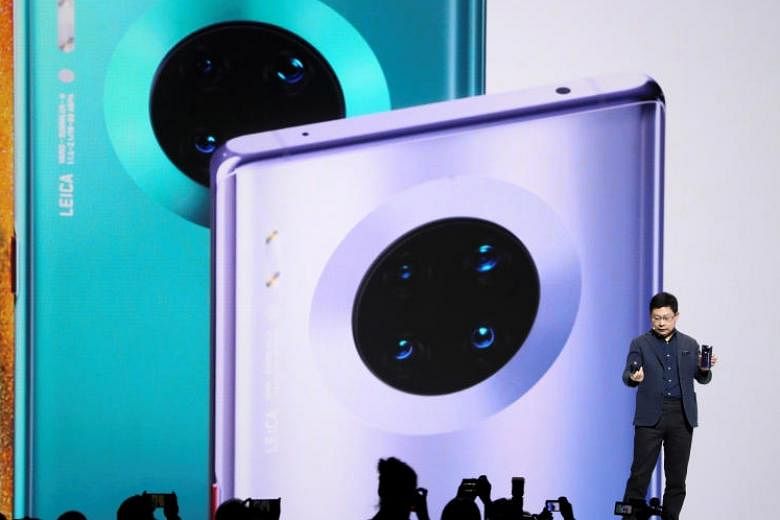The new Mate 30 smartphone series boasts a wealth of new features, but it is Huawei's first flagship phone that will not have access to Google apps and services, due to the United States' ban on American firms doing business with the Chinese tech giant.
This means buyers of the new phone will not have popular apps such as Gmail, YouTube and Google Maps pre-installed, nor will they have access to the apps in Google Play Store.
The Mate 30 and more advanced Mate 30 Pro will still run on the Android operating system, which is open-source at its core.
This is similar to Amazon's Fire tablets, which also run on an open-source version of Android that does not come with Google apps and services.
Huawei's new phones were launched in Munich yesterday at the Rethink Possibilities event.
Huawei consumer business group chief executive Richard Yu presented the devices among other new products, but did not address the Google issue.
The Mate 30's lack of Google apps and services was confirmed by business news organisation Quartz in a report published on Wednesday night.
Huawei was placed on the US Department of Commerce's "entity list" in May due to national security concerns, meaning that US companies must seek prior approval before they can have any business dealings with the Chinese firm.
A partial reprieve is in place until Nov 19, but that applies only to existing Huawei devices such as the P30 and not new products such as the Mate 30.
At the Munich event, Mr Yu chose instead to focus on the phone's hardware features, including its high-end cameras and software that promises best-in-class 5G experiences and high power efficiency.
But tech analysts say the phone's lack of Google apps - which Android consumers are used to working with - will likely have a major adverse impact for the Chinese company, at least in markets outside China. Domestic Chinese buyers have been blocked from accessing many of Google's facilities for years.
Mr Parv Sharma, a research analyst for devices and ecosystems at Counterpoint Research, told The Straits Times that Android users outside China are already "locked in" to the Google Mobile Services ecosystem: "There are not many alternatives which can provide these services reliably and with high quality."
But it may not be all doom and gloom if Huawei works around the ban. Yesterday, the company said it is setting aside US$1 billion (S$1.37 billion) to develop Huawei Mobile Services, an alternative to the Google Play Store and Google services.
Mr Yu also reportedly said earlier this month that Huawei had been looking into the ability to let Mate 30 users install Google apps on their own. The process would be "quite easy", he said.
But analysts remain sceptical. Manually installing apps that are not from officially licensed sources may be easy for Android geeks, but less so for the average user.
Research manager Kiranjeet Kaur, from market research firm IDC, said: "If a consumer, who is buying a premium device, has to go through all these extra steps and still not feel certain that all these apps will continue to work smoothly, then it is going to be a big deterrent."
There are also risks that malware could make its way into phones, as alternative sources of apps may not have been monitored and tested for security issues.
Mr Thomas Husson, vice-president and principal analyst at market research firm Forrester, said it will take time for Huawei to offer a compelling alternative to Google's version of Android - both to develop its own operating system and "foster a competitive ecosystem of brand and developer partners".
Huawei is working on perfecting its own operating system, Harmony OS, which may run on its P40 phone next year.

